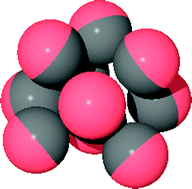Nanofluidic networks created and controlled by light. Nanofluidic networks have been fabricated in an oil-in-water emulsion by a team from the UK. In this hot paper, the authors demonstrate the principles required to create networks of micron-sized reactors connected by conduits less than 100 nm in diameter and to transfer reagents between them, entirely with lasers. These networks form a platform for chemistry on the attolitre scale and could open a path to controlled chemical reactions between single molecules the team claim. (Soft Matter, 2011, DOI:10.1039/C0SM01183E Advance Article)

Cluster theory of Janus particles. A cluster theory for the vapor of Janus fluid has been constructed by a team from Italy and South Africa. The team say that main idea behind the present approach is to consider the vapor phase as formed by clusters, containing an increasing number of particles, that are weakly interacting among each other so that simple fluid models—such as ideal gas or hard spheres—can be used to mimick their physical properties. (Soft Matter, 2011, DOI:10.1039/C0SM00995D Advance Article)
Read both articles for free until 18th March.











